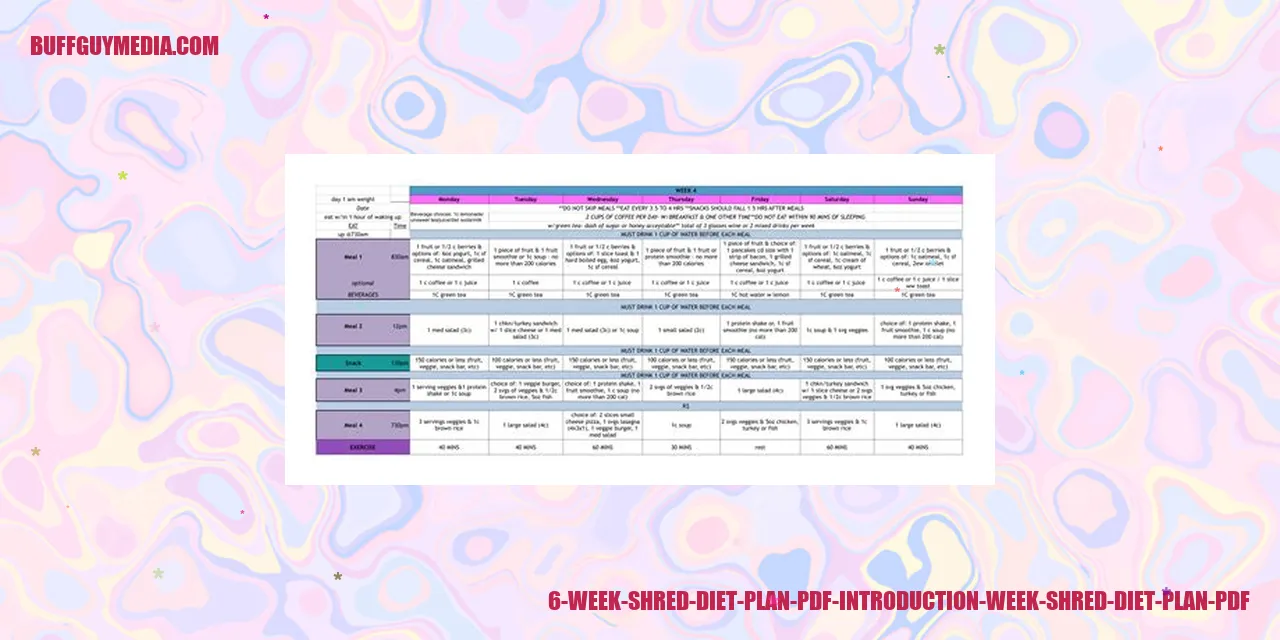Lactose Intolerance Diet Plan PDF: A Comprehensive Guide for Managing Your Symptoms
Developing an Effective lactose intolerance Meal Plan for Optimum Well-being
lactose intolerance is a prevalent gastrointestinal condition affecting numerous individuals worldwide. It arises when the body fails to digest lactose, a naturally occurring sugar found in milk and dairy products. This ailment often leads to distressing symptoms such as bloating, diarrhea, and abdominal discomfort.
Foods to Avoid
When devising a lactose intolerance diet plan, it is crucial to stay away from foods that contain high lactose levels. Dairy products like milk, cheese, and ice cream should be eliminated. Additionally, certain processed foods and medications may also harbor concealed sources of lactose, necessitating careful scrutiny of product labels.
Foods to Include
Despite the need to avoid lactose, there is a plethora of delightful and nutritious alternatives for individuals with lactose intolerance. Opt for dairy-free options such as almond milk, soy milk, and coconut milk. Non-dairy cheeses and yogurts derived from plant-based ingredients are also readily available. Furthermore, incorporating calcium-rich foods into the diet is important, such as leafy green vegetables, fortified plant-based milks, and tofu.
Tips for Meal Planning
Effectively planning meals while adhering to a lactose intolerance diet can be made easier by considering these practical tips:
- Experiment with lactose-free recipes and food products easily accessible in the market.
- Incorporate a diverse range of fruits, vegetables, and whole grains into your meals.
- Prepare meals in advance and carry lactose-free snacks when you are on the go.
- Seek guidance from a registered dietitian to ensure your nutritional requirements are met.
Benefits of Following the Diet
[[READMORE]]
Following a lactose intolerance diet plan offers numerous benefits. It helps reduce or eliminate the uncomfortable digestive symptoms associated with lactose intolerance, thereby enhancing overall quality of life. Furthermore, it ensures that individuals with lactose intolerance can still obtain vital nutrients like calcium and vitamin D from non-dairy sources, promoting optimal bone health.
This well-structured lactose intolerance diet plan allows individuals to effectively manage their condition while diversifying their diet with delicious food options. By remaining conscious of the foods to be included or avoided, implementing helpful meal planning tips, and embracing the advantages of a lactose-free diet, individuals living with lactose intolerance can confidently take charge of their health and well-being.]
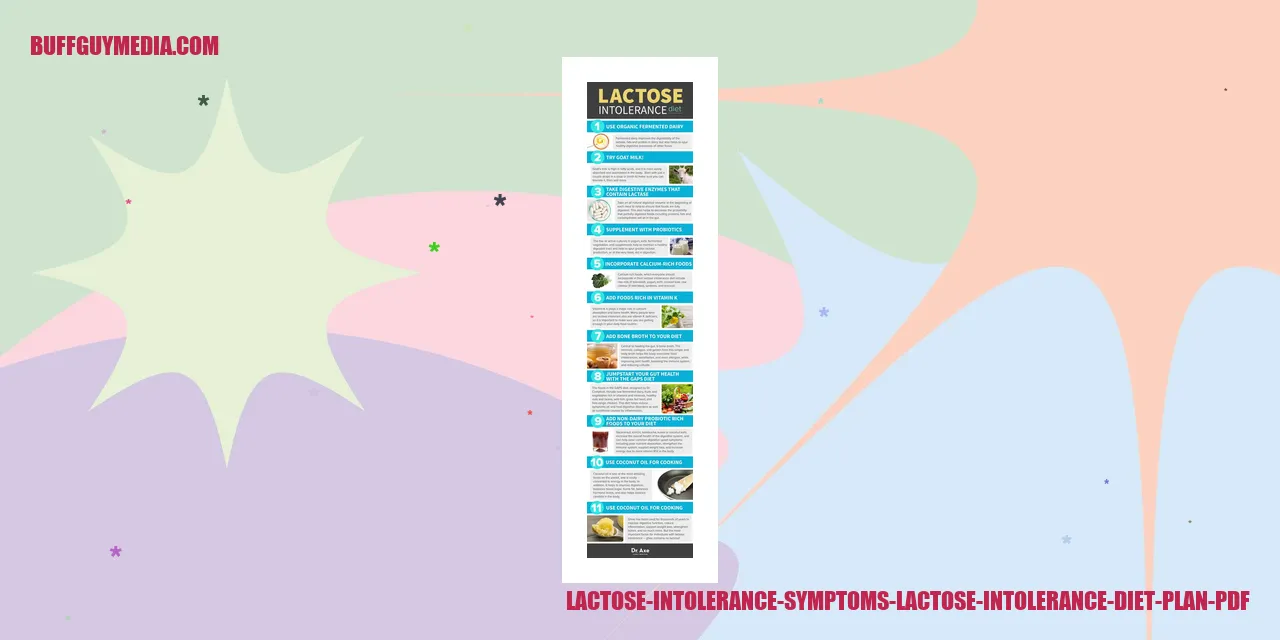
Also read:
Alex Murdaugh Weight Loss: A Remarkable Transformation
Kinetic Pre Workout: Enhance Your Performance and Boost Your Energy
Understanding the Symptoms of Lactose Intolerance
Varying Degrees of Symptom Severity
Lactose intolerance is a condition that affects the digestive system. When individuals who are lactose intolerant consume foods or drinks containing lactose, they may experience a range of symptoms. The severity of these symptoms can differ, ranging from mild discomfort to more severe complications, depending on the person.
Delayed Onset of Symptoms
One characteristic of lactose intolerance is the delayed appearance of symptoms. Usually, these symptoms show up within 30 minutes to two hours after consuming lactose. However, in some instances, symptoms might only become noticeable several hours or even days later.
Efficient Symptom Management Strategies
Managing symptoms associated with lactose intolerance involves minimizing or avoiding the intake of lactose-containing foods and drinks. This can be achieved by adhering to a lactose-free or low-lactose diet. Additionally, lactase supplements are available to aid in the digestion of lactose for individuals with lactose intolerance.
It is worth noting that lactose intolerance symptoms may vary among individuals. Some commonly experienced symptoms include:
- Abdominal pain and cramping
- Bloating
- Excessive gas
- Diarrhea
- Nausea
These symptoms occur because individuals with lactose intolerance lack the enzyme lactase, which is responsible for breaking down lactose – the sugar found in milk and dairy products. As a result, lactose remains undigested in the intestine, leading to the aforementioned symptoms.
To summarize, symptoms of lactose intolerance can range from mild to severe, and their onset can be delayed. Proper management involves avoiding lactose-containing foods and drinks, along with the potential use of lactase supplements.
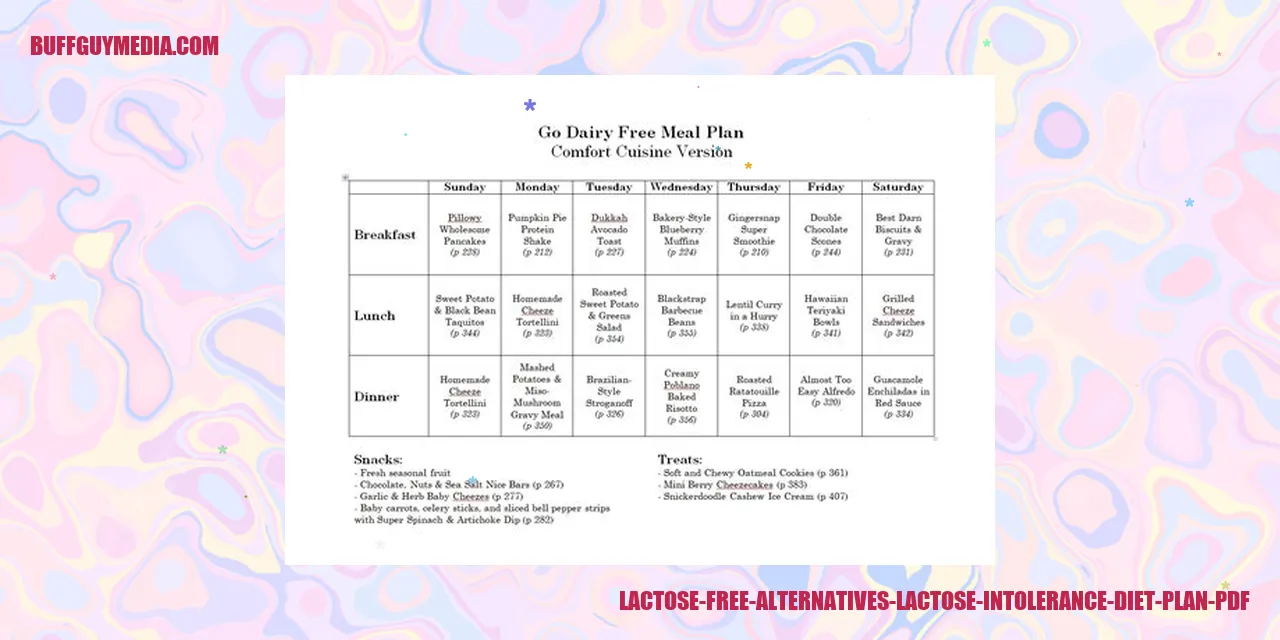
Unveiling Lactose-Free Options: Discovering Delicious dairy-free Alternatives
Lactose-Free Milk: A Nourishing Substitute
For individuals suffering from lactose intolerance, lactose-free milk provides an exquisite alternative. Lactose, a natural sugar present in dairy products, becomes problematic for those with lactose intolerance. With the help of enzymes, lactose-free milk is produced, ensuring all the essential nutrients, such as calcium, vitamins, and proteins, are retained. Whether used in cooking, baking, or enjoying a refreshing glass of milk, this velvety and wholesome alternative won’t disappoint.
Lactose-Free Yogurt: The Savory Solution
Yearning for the delightful tartness of yogurt but unable to tolerate lactose? Fear not, for lactose-free yogurt comes to the rescue. Crafted from nourishing almond milk, soy milk, or coconut milk, lactose-free yogurt boasts live and active cultures, offering numerous health benefits. It’s an adaptable and nutritious dairy-free option, whether savored alone, blended into smoothies, or adorned with fresh fruits and granola.
Lactose-Free Cheese: Elevating the Cheese Game
Cheese enthusiasts need not despair due to lactose intolerance, as a myriad of lactose-free cheese alternatives are available. These delectable cheeses are carefully crafted from nuts, soy, or nutritional yeast, providing a sumptuous texture and authentic cheese flavor. Sprinkle it on pasta, melt it into grilled sandwiches, or include it in a cheese board; lactose-free cheese offers a delightful substitute to traditional dairy-based options.
Other Dairy-Free Possibilities: A World of Choices
In addition to lactose-free milk, yogurt, and cheese, a wide range of dairy-free alternatives await exploration. From almond milk, oat milk, and rice milk to non-dairy ice creams made from coconut milk, the options are abound. Many dairy-free products are fortified with vital nutrients like calcium and vitamin D, ensuring a well-rounded diet even without consuming dairy.
When lactose intolerance poses dietary challenges, lactose-free alternatives provide a solution, ensuring that individuals can continue savoring the flavors and textures they adore. With an ever-expanding array of options at hand, finding suitable alternatives has never been easier. Embrace the variety of lactose-free alternatives available and relish each delectable discovery while maintaining optimal health.

Deciphering the Distinction: Lactose Intolerance versus Dairy Allergy
Definition and Causes
Lactose intolerance and dairy allergy are two distinct conditions associated with the consumption of dairy products. Lactose intolerance refers to the body’s inability to digest lactose, a sugar found in milk and dairy products, due to the deficiency of the enzyme lactase. Conversely, dairy allergy occurs when the immune system reacts to proteins present in milk and dairy products, like casein and whey. These conditions have diverse underlying causes and mechanisms, resulting in variations in symptoms and reactions.
Symptoms and Reactions
Individuals suffering from lactose intolerance may experience bloating, diarrhea, gas, and abdominal discomfort after consuming dairy products. The severity of these symptoms can range, with some people tolerating small amounts of lactose without any discomfort. On the other hand, dairy allergy can elicit more severe and immediate reactions. These reactions may encompass hives, swelling of the lips and tongue, vomiting, and even anaphylaxis in severe instances. Symptoms of dairy allergy typically manifest shortly after the ingestion of dairy products.
Diagnosis and Testing
Healthcare professionals employ a lactose tolerance test or a lactose breath test to diagnose lactose intolerance. These tests evaluate the body’s ability to digest lactose and determine the individual’s lactose tolerance level. In contrast, diagnosing a dairy allergy requires a more comprehensive evaluation. This may entail a physical examination, review of medical history, and specific allergy tests such as skin prick tests, blood tests, or oral food challenges. By assessing symptoms and test results, medical professionals can accurately diagnose and differentiate between these conditions.
Treatment and Management
Managing lactose intolerance involves limiting or avoiding foods and beverages containing lactose. Lactase supplements are also available to assist with lactose digestion. Individuals with dairy allergies must strictly refrain from consuming milk and dairy products to prevent allergic reactions. In severe cases of dairy allergy, carrying an epinephrine auto-injector is essential for countering severe allergic reactions. It is crucial for individuals with lactose intolerance or a dairy allergy to carefully read food labels, as milk and dairy derivatives can be concealed ingredients in various products.
Remember, although lactose intolerance and dairy allergy share similarities in terms of symptoms, the underlying causes and management approaches differ. If you suspect you have either condition, it is advisable to consult a healthcare professional for an accurate diagnosis and appropriate management plan.
]
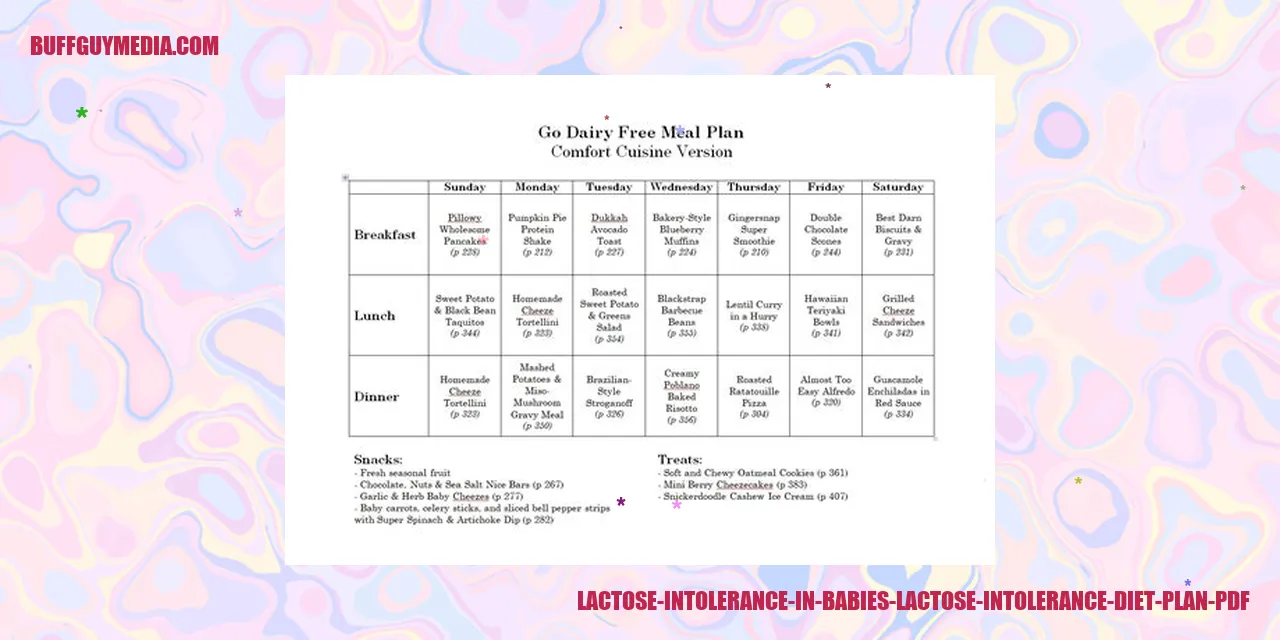
Understanding Lactose Intolerance in Babies
Causes and Risk Factors
Lactose intolerance is a condition that affects babies when they struggle to digest lactose, the natural sugar found in milk and dairy products. This issue mainly occurs due to a deficiency in lactase, the enzyme responsible for breaking down lactose. Some babies are born with low levels of lactase, while others may develop lactose intolerance due to intestinal illnesses or injuries. Premature babies are at a higher risk of developing lactose intolerance as well.
Symptoms and Signs
Babies with lactose intolerance often experience gastrointestinal problems after consuming milk or dairy products. Common indications include bloating, diarrhea, gas, and abdominal cramps. These symptoms typically appear within a few hours after consuming foods containing lactose. Additionally, babies may appear fussier and more irritable than usual.
Dietary Recommendations
If your baby has been diagnosed with lactose intolerance, adjusting their diet is crucial to avoid discomfort and ensure they receive proper nutrition. Here are some dietary recommendations to consider:
1. Switch to lactose-free or low-lactose formula: There are specially formulated infant formulas available in the market that do not contain lactose. These formulas can provide the necessary nutrients without causing digestive issues.
2. Breast milk with lactase drops: If you are breastfeeding, you can add lactase drops to the breast milk to aid your baby in digesting lactose more effectively.
3. Introduce lactose-free solid foods: As your baby grows, you can gradually introduce lactose-free solid foods into their diet. These may include a variety of fruits, vegetables, grains, and proteins.
Consulting a Pediatrician
Seeking Professional Advice
If you suspect that your baby may have lactose intolerance or if they display any symptoms mentioned earlier, it is essential to consult a pediatrician. They can perform tests to confirm the diagnosis and provide personalized guidance on managing your baby’s lactose intolerance. A pediatrician can also ensure that your baby is receiving adequate nutrition while avoiding lactose-containing foods.
Remember, early detection and appropriate management of lactose intolerance are vital for your baby’s overall well-being and development. Always seek professional medical advice before making any changes to your baby’s diet or healthcare routine.
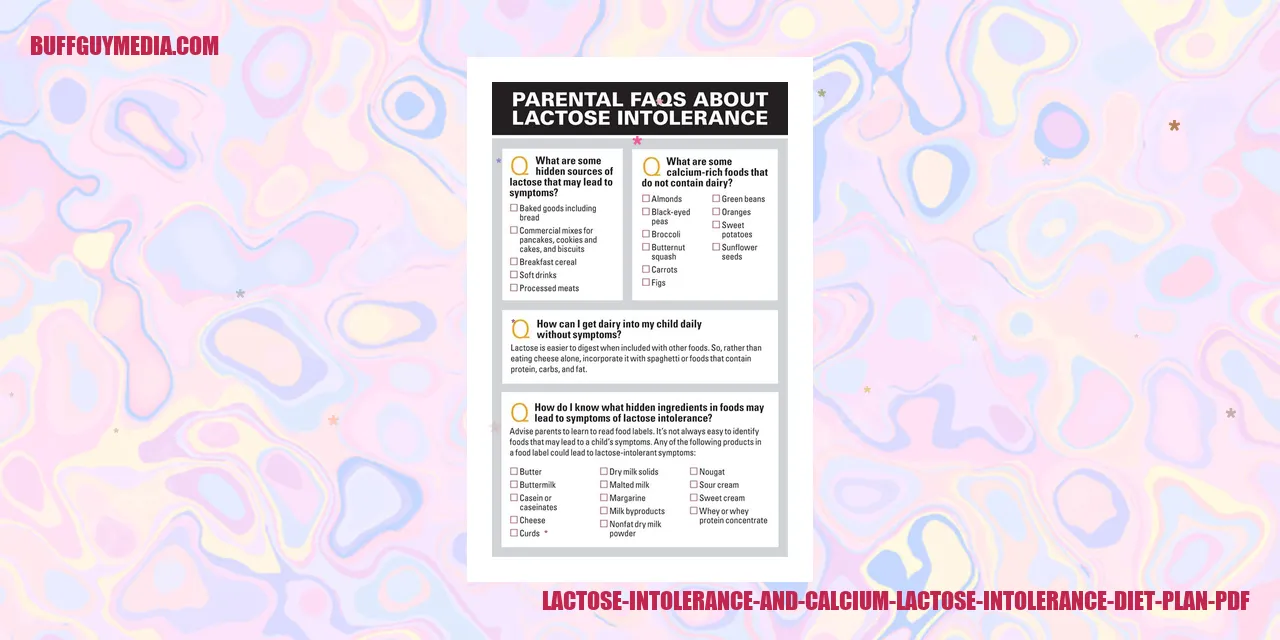
Finding Balance: The Link between Lactose Intolerance and Calcium
The Significance of Calcium
Calcium is an indispensable mineral that plays a vital role in upholding sturdy bones and teeth, while also supporting a range of bodily functions. Its importance is especially pronounced during childhood and adolescence when bone growth reaches its peak. Additionally, calcium contributes to muscle contraction, nerve activity, and blood clotting.
Alternative Sources of Calcium for those with Lactose Intolerance
Individuals who struggle with lactose intolerance often find it challenging to meet their calcium requirements, as dairy products are the primary source of this essential mineral. However, there are numerous non-dairy sources of calcium that can be incorporated into their daily diet. These include:
- Leafy greens such as kale, spinach, and broccoli
- Soy-based products like tofu and tempeh
- Fish with edible bones, such as canned salmon and sardines
- Nuts and seeds, including almonds, chia seeds, and sesame seeds
- Plant-based milk alternatives fortified with calcium, like soy, almond, or oat milk
By including these non-dairy sources in their diet, individuals with lactose intolerance can ensure they acquire a sufficient amount of calcium to support their overall well-being.
The Role of Calcium Supplements
In certain cases, individuals suffering from lactose intolerance or those unable to consume enough calcium-rich foods may benefit from calcium supplements to meet their daily recommended intake. However, it is crucial to seek advice from a healthcare professional before commencing any supplementation. They can provide guidance on appropriate dosages and potential interactions with other medications.
Monitoring Calcium Consumption
To ward off long-term consequences such as weakened bone density, it is imperative for individuals with lactose intolerance to monitor their calcium intake closely. Keeping track of their daily calcium consumption can help ensure they meet the recommended daily intake, which typically ranges from 1000-1300 mg for most adults.
In conclusion, while lactose intolerance can present obstacles in fulfilling calcium requirements, it is essential for individuals to discover alternative sources of this crucial nutrient. By incorporating non-dairy calcium sources into their diet, considering calcium supplements when necessary, and carefully monitoring calcium intake, those with lactose intolerance can maintain optimal calcium levels and support their overall health and well-being.
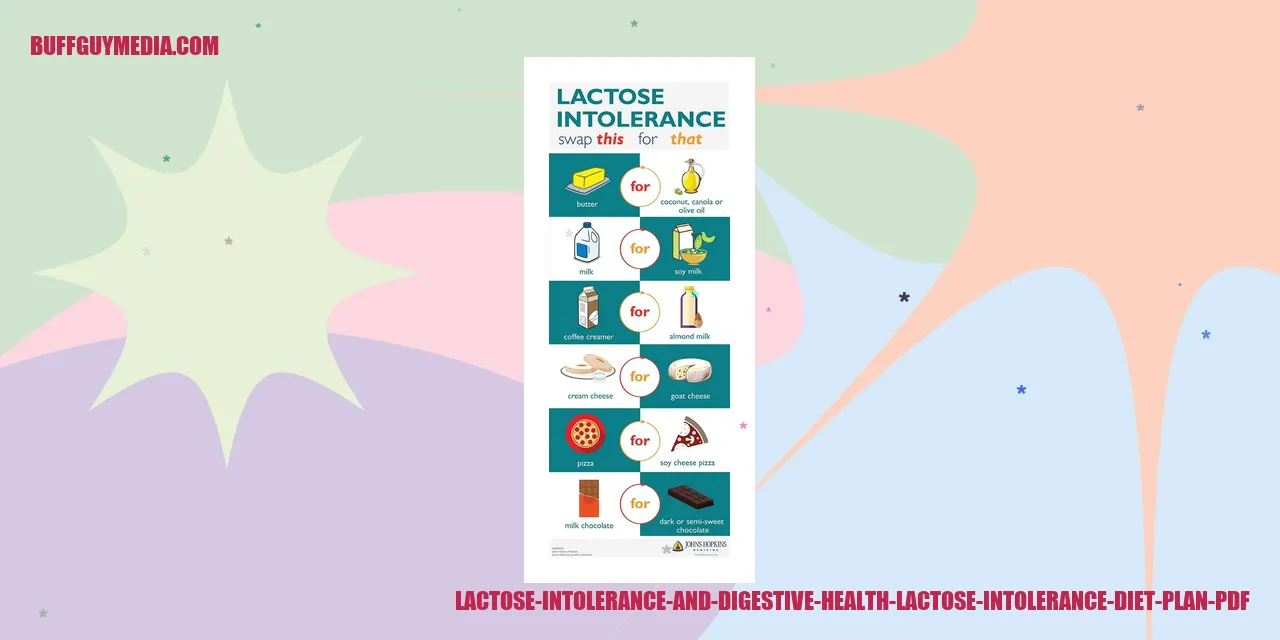
The Impact of Lactose Intolerance on Digestive Health
The Role of Gut Microbiota in Lactose Intolerance
Lactose intolerance is a prevalent digestive disorder that affects the body’s capacity to digest lactose, a natural sugar found in milk and dairy products. This condition arises due to a deficiency or absence of lactase, the enzyme responsible for breaking down lactose in the small intestine.
Recent studies have revealed that the composition of gut microbiota, the diverse community of microorganisms residing in the gastrointestinal tract, plays a crucial role in lactose intolerance. Imbalances within the gut microbiota can disrupt lactose digestion and worsen symptoms such as bloating, abdominal cramps, diarrhea, and excessive gas formation.
The Impact on the Digestive System
The inability to adequately digest lactose can significantly impact the digestive system. When lactose remains undigested, it travels to the large intestine, where bacteria ferment it, resulting in the production of excessive gases and compounds like lactic acid. This leads to discomfort and gastrointestinal symptoms.
Prolonged exposure to these fermented byproducts can disturb the normal functioning of the digestive system, causing inflammation, changes in gut motility, nutrient malabsorption, and potentially more severe conditions such as irritable bowel syndrome (IBS).
Effective Management of Digestive Symptoms
While there isn’t a cure for lactose intolerance, there are several strategies available to effectively manage digestive symptoms. One common approach is adopting a lactose-free diet or reducing lactose intake by avoiding lactose-rich foods like milk, cheese, and ice cream.
Individuals with lactose intolerance may also benefit from incorporating lactase supplements into their diet, as these can help improve lactose digestion. Additionally, consuming lactose in smaller quantities or in combination with other foods may alleviate symptoms in certain individuals.
Seeking Professional Advice
If you suspect you may have lactose intolerance or have been experiencing persistent digestive symptoms after consuming lactose-containing products, it is crucial to seek guidance from a healthcare professional. A medical expert can provide an accurate diagnosis, rule out other underlying conditions, and offer personalized dietary recommendations.
Remember, self-diagnosing and self-managing lactose intolerance can potentially lead to health risks and inadequate nutrient intake. Consulting a healthcare professional ensures appropriate symptom management and support in maintaining optimal digestive health.
Lactose Intolerance: How it Affects Weight Loss
Understanding the Connection to Weight Management
Lactose intolerance is a condition that impacts the body’s ability to digest lactose, a natural sugar present in milk and dairy products. Those who have lactose intolerance often experience unpleasant gastrointestinal symptoms, such as bloating, diarrhea, and abdominal pain, after consuming lactose-containing foods. These symptoms can affect weight management, as individuals tend to avoid dairy products that are often high in calories and fat.
The Impact on Caloric Intake
Due to the discomfort caused by lactose intolerance, individuals often opt to avoid dairy products in their diet. This dietary adjustment can result in reduced calorie intake, leading to potential weight loss, particularly if lactose-containing foods are replaced with lower-calorie alternatives.
Choosing Suitable Low-Lactose Food Options
For individuals with lactose intolerance who are looking to lose weight, it is important to select food options that are low in lactose or lactose-free. This can include opting for lactose-free milk, non-dairy yogurt made from sources like almond or coconut milk, and cheese varieties that naturally contain lower levels of lactose, such as feta or Swiss cheese. By making these choices, individuals can still fulfill their nutritional requirements without consuming excess calories.
Enhancing Weight Loss Efforts with Exercise
Incorporating regular physical exercise alongside a low-lactose diet can further enhance weight loss efforts for individuals struggling with lactose intolerance. Engaging in exercise helps burn calories, build muscle mass, and improve overall metabolic health. It is advisable to consult with healthcare professionals or registered dietitians to develop a suitable exercise routine and ensure that nutritional needs are met.
By comprehending the relationship between lactose intolerance and weight loss, individuals can make informed decisions regarding their dietary choices and effectively manage their weight.
HTML

Understanding the Significance of Vitamin D for Individuals Dealing with Lactose Intolerance
Risk of Vitamin D Deficiency for People with Lactose Intolerance
For those who have lactose intolerance, the inability to effectively digest lactose, a sugar present in dairy products, can present difficulties in obtaining crucial nutrients such as calcium. However, vitamin D is another vital nutrient that deserves special attention for individuals with lactose intolerance.
Vitamin D is essential in maintaining optimum bone health, preventing osteoporosis, and supporting overall immune system function. It also plays a critical role in the absorption of dietary calcium. This aspect is particularly significant for those with lactose intolerance since they may have an increased susceptibility to vitamin D deficiency.
Due to their restricted consumption of dairy products, which are frequently fortified with vitamin D, individuals with lactose intolerance face a higher risk of developing a vitamin D deficiency. Subpar vitamin D levels can compromise calcium absorption, potentially leading to weaker bones and an elevated risk of fractures.
Alternative Sources of Vitamin D
While dairy products are commonly associated with vitamin D, those with lactose intolerance can acquire this essential nutrient from alternative sources. Fatty fish, such as salmon and mackerel, serve as excellent natural sources of vitamin D. Moreover, egg yolks, fortified plant-based milk, and specific types of mushrooms also contain varying amounts of vitamin D.
Additionally, taking vitamin D supplements as advised by a healthcare professional can help ensure that individuals with lactose intolerance meet their daily requirements. These supplements are available in various forms, including capsules, tablets, and liquid drops, making it convenient to incorporate them into a daily routine.
Monitoring Vitamin D Levels
Regularly monitoring vitamin D levels is crucial for individuals managing lactose intolerance, as it guarantees adequate intake of this vital nutrient. A simple blood test can be conducted to accurately measure an individual’s vitamin D status.
Once vitamin D levels are determined, healthcare professionals can provide personalized recommendations to optimize vitamin D intake. This may include adjusting supplement dosages or making dietary modifications to ensure sufficient vitamin D consumption.
In conclusion, individuals with lactose intolerance need to prioritize their vitamin D intake to maintain ideal bone health and support overall well-being. By exploring alternative sources of vitamin D and regularly monitoring their vitamin D levels, they can ensure that their nutritional needs are met, even without consuming dairy products.

Exploring Lactose Intolerance: Answers to Frequently Asked Questions (FAQ)
What is lactose intolerance?
Lactose intolerance refers to the body’s inability to effectively digest lactose, a type of sugar found in dairy products. This occurs when there is an insufficient amount of lactase, the enzyme responsible for breaking down lactose. Common symptoms include abdominal discomfort, bloating, excessive gas, and diarrhea after consuming lactose-containing foods.
Can lactose intolerance be treated?
Lactose intolerance cannot be completely cured since it is often a lifelong condition. However, the symptoms can be managed through the avoidance or reduction of lactose-rich foods and beverages.
What are the primary sources of lactose?
Main sources of lactose include milk and dairy products such as cheese, butter, yogurt, and ice cream. Additionally, lactose can also be present in certain processed foods, medications, and even in non-dairy products that may incorporate lactose as an additive.
Can lactose intolerance develop later in life?
Indeed, lactose intolerance can manifest later in life. While some individuals may possess a genetic predisposition to developing lactose intolerance, it can also be triggered by factors such as specific medical conditions, gastrointestinal surgeries, or the natural decline in lactase production associated with aging.
Do you need to completely eliminate lactose from your diet?
No, it is not always necessary to completely exclude lactose from your diet. The severity of lactose intolerance varies among individuals, and some may be able to tolerate small amounts of lactose without experiencing significant symptoms. However, it is essential to understand your own tolerance level and make dietary choices accordingly.
Are there any medications available for lactose intolerance?
No medications are currently available to increase lactase production. Nevertheless, over-the-counter lactase supplements can be consumed alongside lactose-containing foods or beverages to assist in digestion. These supplements provide the necessary lactase enzyme to break down lactose.
Is lactose intolerance hereditary?
Yes, lactose intolerance can have a hereditary component. Certain individuals are born with a genetic predisposition to produce less lactase, making them more susceptible to developing lactose intolerance. A combination of genetic factors and environmental triggers contributes to the onset of lactose intolerance.







